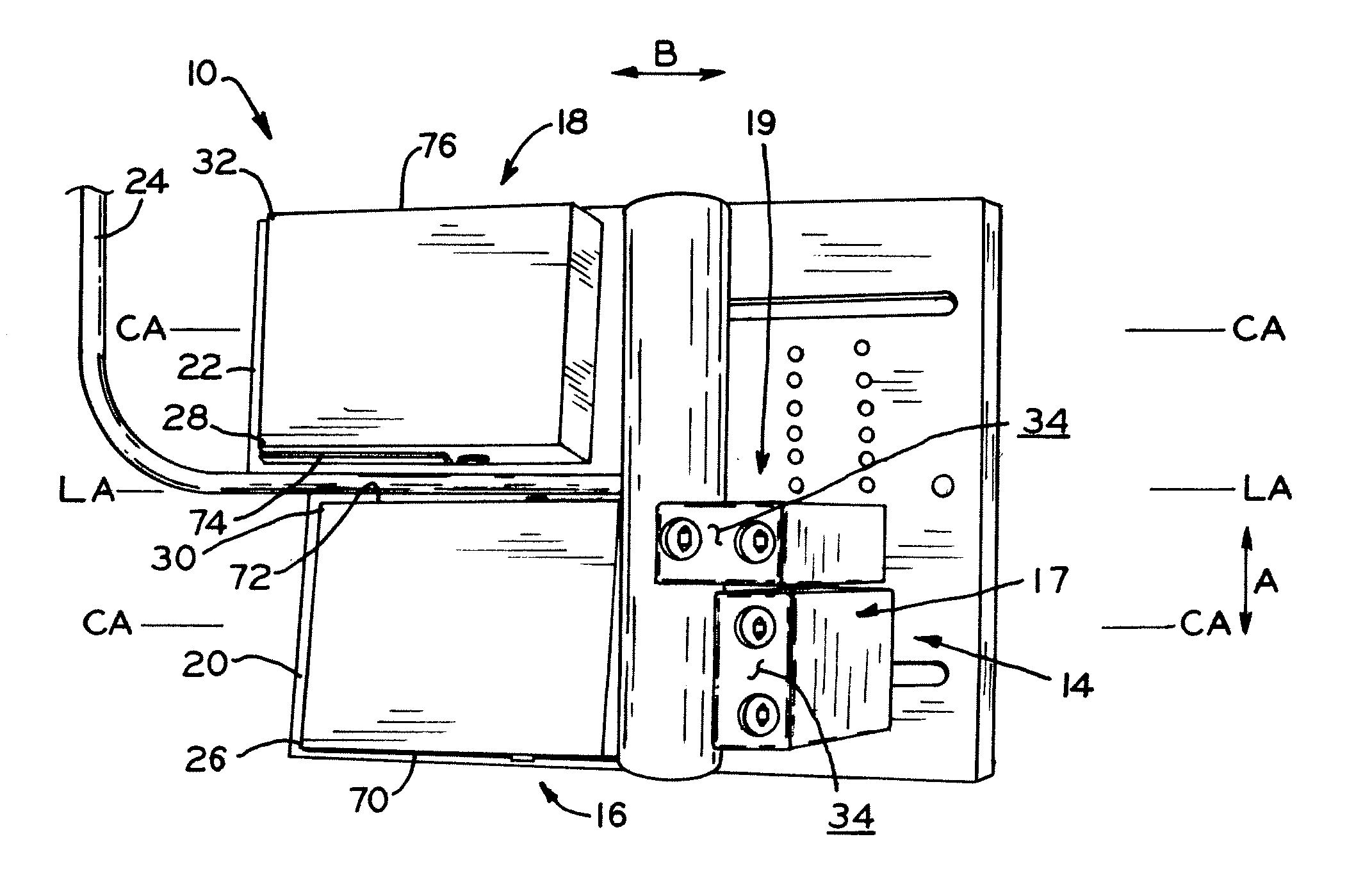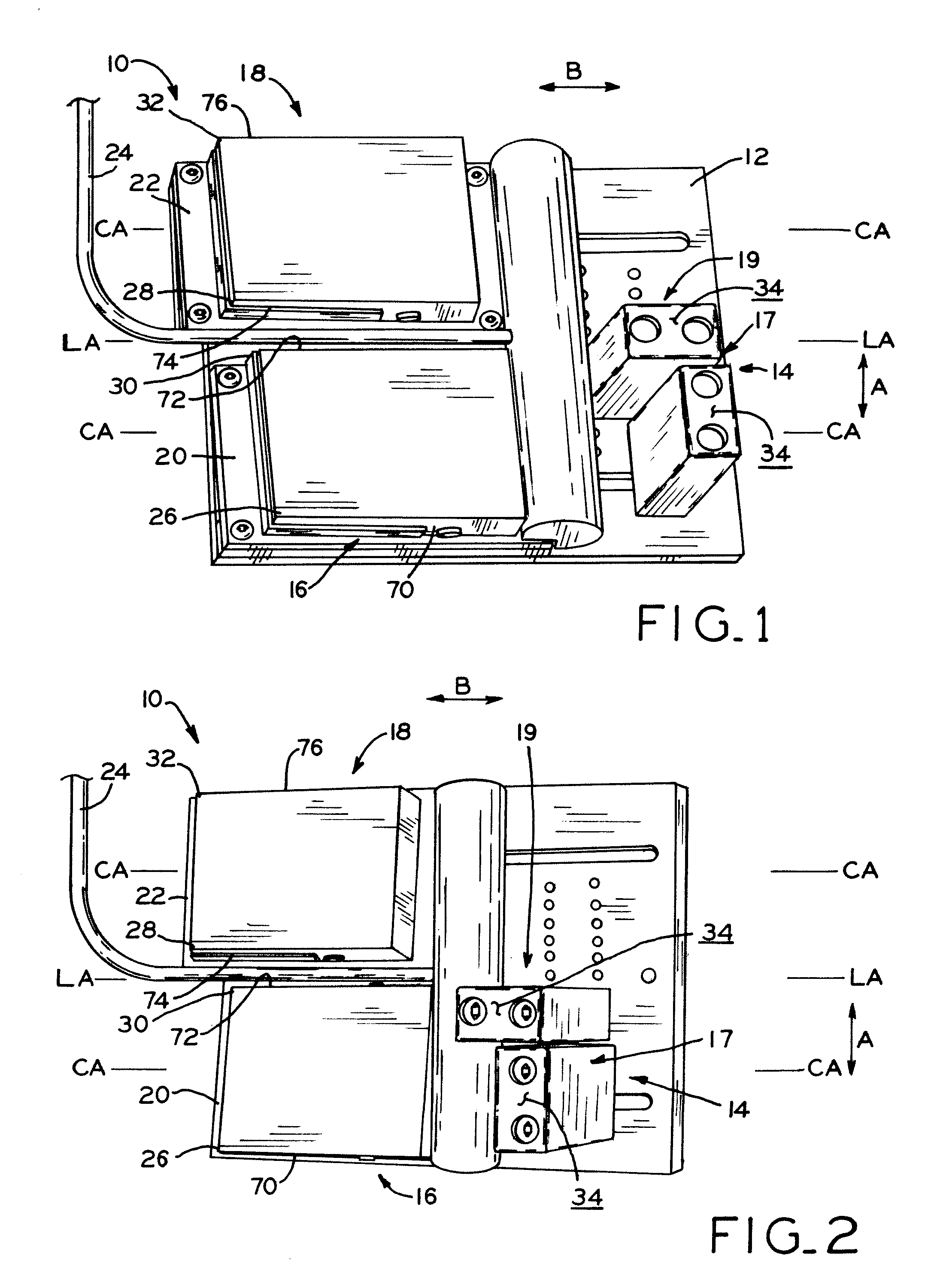Foot actuated switch
a switch and foot technology, applied in the field of switches, can solve the problems of restricted working under microscope magnification, dentist's hands are unavailable to activate dental instruments or otherwise operate the same, and dentist's hands may not have the freedom to adjust the focus and/or zoom of microscopes, so as to minimize muscular activities and movement during activation, prevent interruption of procedures, and minimize body movement. the effect of activation
- Summary
- Abstract
- Description
- Claims
- Application Information
AI Technical Summary
Benefits of technology
Problems solved by technology
Method used
Image
Examples
Embodiment Construction
[0031]Referring to FIG. 1, foot control unit 10 of the present invention is shown. Foot control unit 10 includes base plate 12 having heel support 14 secured thereto and switches 16, 18 positioned thereon. Heel support 14 extends upward from base plate 12 and is designed to support the heel of a dentist's foot during a dental procedure, as described in detail below. While described in detail herein with specific reference to use by a dentist during a dental procedure, foot control unit 10 may be used by any individual and in any situation in which the foot operated control of instruments and / or machinery is desirable, such as by a surgeon or a musician. Additionally, while described and depicted herein with specific reference to two switches, i.e., switches 16, 18, the present invention may be utilized in conjunction with any number of switches. In one exemplary embodiment, switches 16, 18, are “Treadlight” switches commercially available from LINEMASTER Switch Corporation, 29 Plain...
PUM
 Login to View More
Login to View More Abstract
Description
Claims
Application Information
 Login to View More
Login to View More - R&D
- Intellectual Property
- Life Sciences
- Materials
- Tech Scout
- Unparalleled Data Quality
- Higher Quality Content
- 60% Fewer Hallucinations
Browse by: Latest US Patents, China's latest patents, Technical Efficacy Thesaurus, Application Domain, Technology Topic, Popular Technical Reports.
© 2025 PatSnap. All rights reserved.Legal|Privacy policy|Modern Slavery Act Transparency Statement|Sitemap|About US| Contact US: help@patsnap.com



